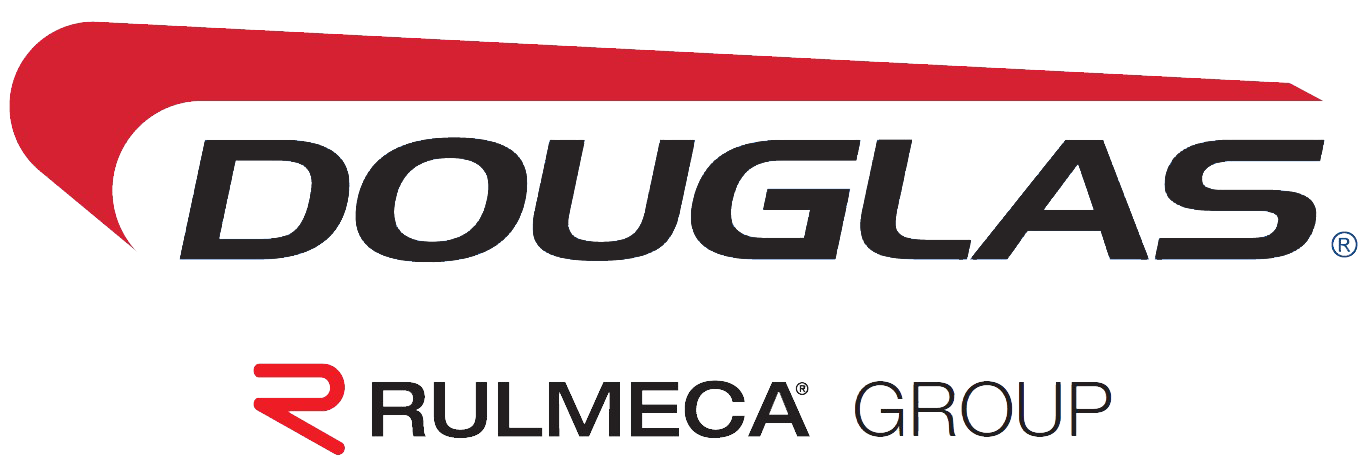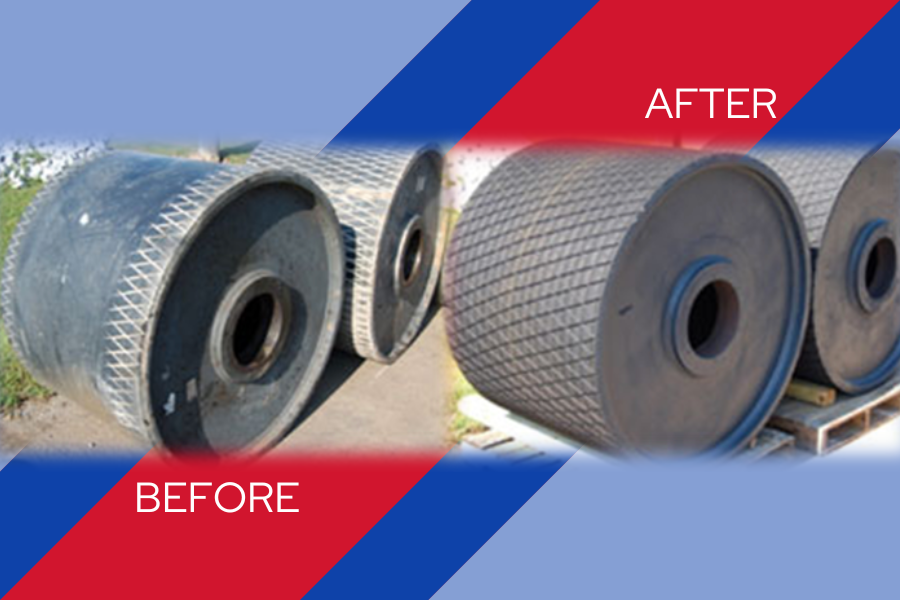Douglas Manufacturing aims to improve conveyor performance in practical and effective ways while reducing the environmental impact of operations. This method helps to improve the bottom line and overall efficiencies. It is important to consider the benefit of carefully selecting appropriately designed conveyor components from the perspective of overall cost, performance and environmental impact.
Eco-Friendly Conveying
A designer must address two important issues regarding component selection for most conveyor systems — whether to lag a pulley and what lagging material to select.
Vulcanized pulley lagging will increase the coefficient of friction between the belt and the pulley by up to 50% over a bare-faced steel pulley. The rubber lagging helps improve belt tracking by moving the belt to the center of the pulley in crown-faced pulleys. Lagging provides additional benefits for pulley life by protecting the pulley face from abrasion. The grooves that shed water and material away from the pulley face improve traction, just like the grooves in a car’s tires.
One of the highest-performing types of lagging available is ceramic lagging. Many types of this material are available with many design features and unique attributes. This material is characterized by unbeatable wear performance, durability, and load-carrying capacities. These are achieved due to special wear-resistant ceramic tiles and an advanced rubber compound and bonding process. Some of the attributes of ceramic lagging include the following:
- Up to twice the coefficient of friction over non-lagged pulleys
- Up to 50% higher coefficient of friction over standard rubber lagging
- Virtually eliminates belt slippage
- Easily sheds water and dirt
- Belt tension in the take-up system is reduced
- The counter-weight mass is reduced
- Lower belt tension and less take-up weight increases the life of components and belt
- May reduce the shaft and bearing sizes required
- Drive pulleys with ceramic lagging may last up to 8 times longer than standard lagged pulleys
- Belt tracking is vastly improved
- On many types of 3 and 4-belt conveyors, the required horsepower can be reduced up to 1.3%
The increased friction between the belt and the lagging material results in a wide range of benefits. The ceramic is highly durable, and it will not wear out like plain lagging or a steel pulley face will wear out. It may last up to eight times longer in many applications. The direct result is energy savings coupled with longer component life. This is a win-win for the overall budget, the environment and the bottom line.
Pulley Recycling
Structurally intact pulleys can be cleaned and re-lagged at around 25% to 35% of the cost of a new pulley. New bushings, bearings and shafting can be provided to complete the assembly. The result is a completely rebuilt pulley assembly that is immediately available to be placed back into service or set aside as a spare for future use during a planned shutdown or regularly scheduled maintenance cycle.
This type of responsible thinking can improve the bottom line of the average plant and serves to help the environment through the elimination of waste. Simply put, “Reduce, Reuse and Recycle.”

